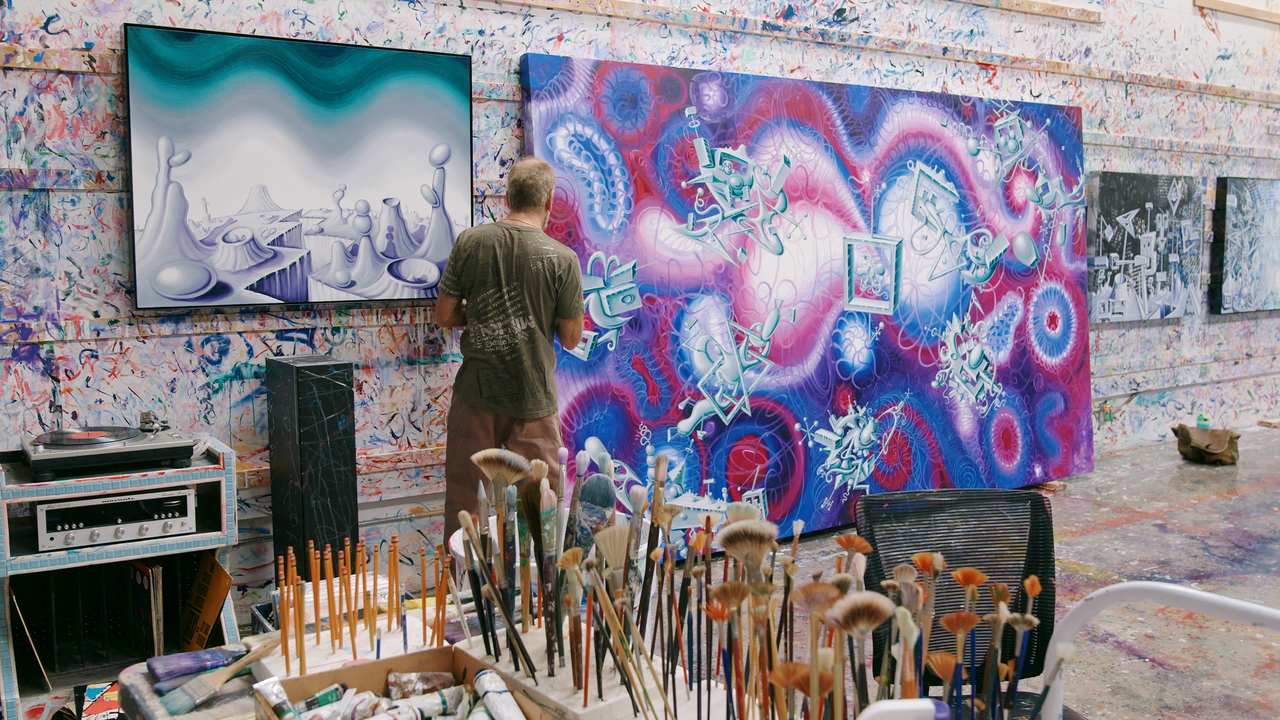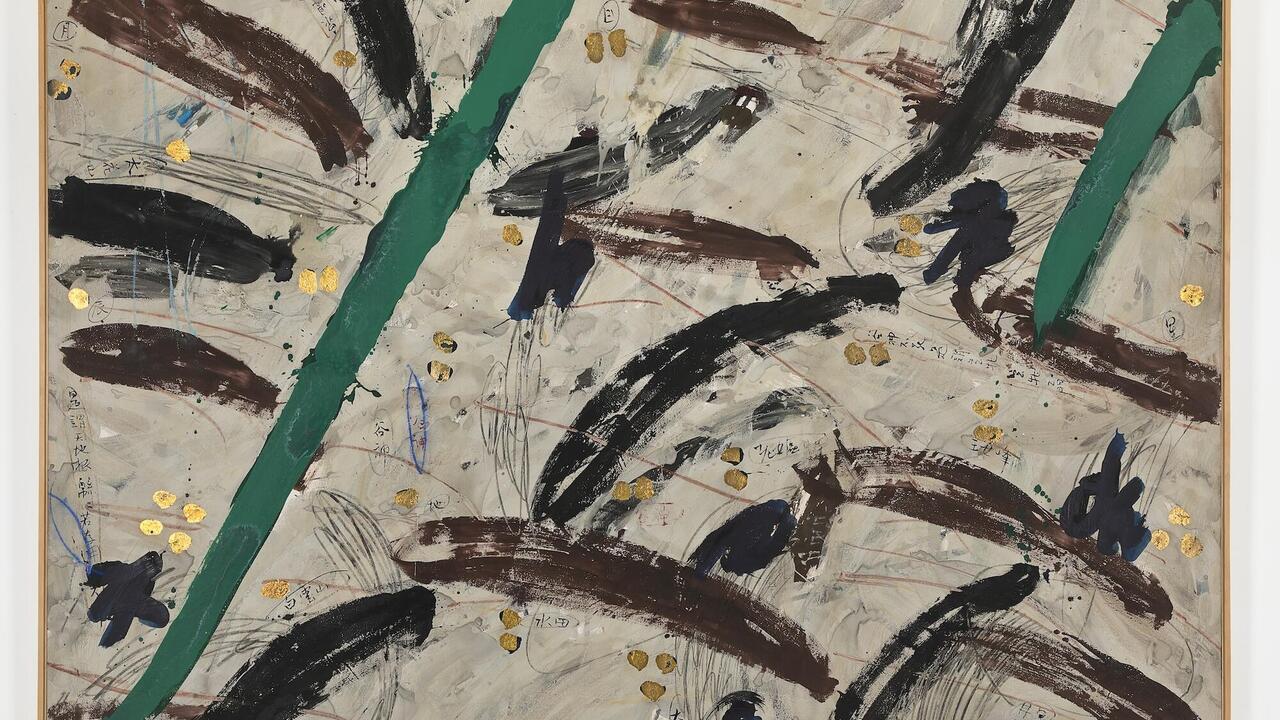Wish You Were Here
The German slide-show phenomenon
The German slide-show phenomenon
As the weather begins to get cold and dreary, right on cue posters start to deluge the centre of German towns and cities. There are so many of them that you think they must be announcing some profoundly significant event. The political slogans and the faces that go with them had just been packed away ('World class for Germany' with Helmut Kohl), only to be replaced by A0 format posters on heavy-duty paper introducing new spectacles with new superlatives. Armies of bill-stickers compete for the best advertising spaces, while their employers, who have sharpened up their act over the years, now proudly position their names, like major firms, prominently on the posters: 'ZebrAVision' or an 'Arts and Adventure Production'. What such outfits do is to send young adventurers off to strange and distant places, and then meet them at the airport after their trip to collect the sackfuls of slides their emissaries are contracted to provide.
'There's nothing like getting away!' - it began years ago as a few months abroad after school, university, apprenticeship or military service, but now, though identical in essence, travel is 'lived out in advance' by professionals. Instead of your elder sister's grotty rucksack and groundsheet, an out-of-date guide and a small camera, the great performance in halls back home is planned and executed with high-tech precision. Nature can no longer be tackled by Jeep alone - there has to be a sea-plane involved, and it has to be on the poster too: 'Canada; Panoramic vision of superlatives', 'Yanomami. Brazilian Indians. Eye-witness report', 'South Africa'. All of these shows could have been seen in Berlin on the same day last December: first you go to the Church of the Passion, then to the Haus am Köllnischen Park, and then across to the Humboldt University hall. Alternatives to the internal combustion engine are explored on the spot: 'America's West. Through the USA on foot and in the saddle', 'South America. Through Chile and Argentina with a rucksack'. Anyone who missed the shows can catch up with them in Munich, Hamburg or Oberhausen. Or you can wait until next winter - as a rule the whole package will come round at least once again. Courtesy of these posters, the morning walk to the newsagent becomes a journey round the world.
The very specific visual impact posters have on the urban environment should not be underestimated. They work on the same level and in the same spirit as advertising graphics, reflecting a long-term boom in the tourist business and the fact that the world of images is searching for directness in all media. But if you examine the posters a little more closely in terms of the pictorial and textual information they offer, you are struck almost immediately by how much they resemble conceptual artistic strategies of the kind introduced in the late 60s and the 70s, and which are still very popular: a much-trumpeted, attractive title (the event), a description of the place where this event is to happen (the location), one or more authors, the technology, the time, the organisers and, last but not least, the sponsors.
The omnipresent colour photograph serves to illustrate the title (as a rule a country, a specific place or an area) while displaying an almost indescribably tacky mastery of the cliché: 'Tibet. Touching The Sky. An Arts and Adventure Production. Live slide show by Kai-Uwe Kuchler, 20.11.1998...' The impact of these 'works' in the urban space is inescapable. Posters are put up, aggressively, repeatedly, for weeks on end; the message is drummed into passers-by in the most unexpected places, until they finally realise what they are missing, that they absolutely must go to 'Where The Wind Lives, Patagonia - Tierra del Fuego - Easter Island'.
And of course German museums can't resist jumping on the bandwagon: 'Landschaft als Fremde' (The Alien Landscape) was the title of an exhibition of Max Beckmann's pictures in the Hamburg Kunsthalle, and back in Berlin, I missed both the Live-SuperVision-Slide-Show on 'England and Scotland' and the Lyonel Feininger show in the Neue Nationalgalerie, Von Gernrode nach Manhattan (From Gernrode to Manhattan). The same museum's next show is Paul Gauguin, under the title Das Verlorene Paradies (The Lost Paradise).
'Works of art ... made up of words, images and music' writes a Berlin daily. This description is familiar, comfortable even, given the never-ending 'crossover' debates. But why then tailor this desire for travel, and the whole business enterprise itself to the medium of the slide projection? Having 'been there live' on a number of occasions, various answers present themselves: there is no travelling central European who can't afford, or doesn't feel like, taking at least a dirt-cheap pocket camera on any trip. All you need is the right ten-pack of slide film, and you're on an equal footing with the speaker on the stage, at least in terms of equipment. He and you are no longer distanced figures but more like friends or colleagues who are simply a bit ahead of the field with a major experience, a big adventure, a great danger already in the bag.
The protagonists of these live slide-shows are not as well-known as their colleagues from the world of advertising and film; they embody a kind of unique being known as the adventurous hero, who simply wants to show us, live, how authentic he is. He talks, sings, describes and explains, filling in what the slides on the big screen cannot convey: the indescribable heat, the constant sense of being threatened, the contaminated water... he's a purveyor of sound and images in living 3-D, with a first name and a surname, just like you and me.
These events are very popular, even though the admission price is far higher than that of a cinema ticket. It would seem that despite the ever-increasing range there is no sign of declining demand. I cannot think of any comparable performance form (apart from feature films like Independence Day) that serves such a large audience and fills so many venues at the same time. The punters have made their choice - to escape from raw, dark, rainy, depressing reality. Yet for the tribes of keen, globetrotting students, without whom the whole phenomenon would never have taken off, this is no escapist fantasy. They're busy planning journeys of their own, or comparing their memories with those of the professionals. Even the less adventurous, older clientele often have a personal investment, as they eagerly anticipate the giftwrapped photo album from the grandson who has just been 'there'.
















